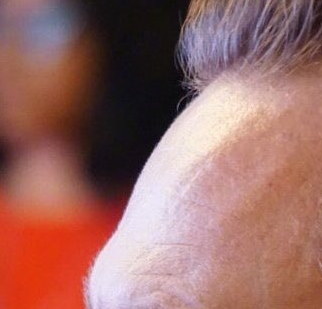Sloped Forehead Meaning
The forehead isn’t a particularly interesting feature of the face to look at. It is merely a blank space, unlike the mouth or the eyes. However, the forehead has the potential to greatly enhance overall facial beauty.
A sloping forehead is characterized by a large angle between the hairline and brow bone. This trait is sometimes considered unpleasant or unsightly, particularly in females. The size of one’s forehead is one of several factors that contribute to overall facial attractiveness. A high hairline can give the impression of a very large forehead. If it is positioned too low, additional issues can result. Similarly, many people are concerned about the slope of their brows.
People with naturally sloping foreheads are frequently the descendants of ancestors with comparable facial characteristics. It is also triggered by injuries to the face or head, particularly the central frontal region. This can often result in deformity and a decrease in frontal bone density if left untreated.
Some individuals have a naturally depressed or sloping forehead. It is because men tend to possess a sloped brow ridge. It’s also possible that girls naturally have higher hairlines than boys do. Men’s average forehead slopes downward by 10°, while women’s average slopes downward by 6°.
When compared to that of men, the foreheads of women are often significantly more vertically aligned. Their foreheads may occasionally even incline slightly forward. These small differences do not change the overall look much. The presence of a broad brow ridge is a sexually dimorphic characteristic, as only men possess it. Because of this, men’s foreheads usually slope a bit more than women’s.
Sloped Forehead in Male and Female
Apolo and colleagues in 2018, discovered that a sloping forehead indicates a more masculine appearance. This makes sense because having a prominent brow ridge is indeed a male feature.
A person is considered to have a sloping forehead if there is a noticeable angle between their hairline and brow bone. This trait, especially when exhibited by women, is likely to be regarded as unattractive or unsuitable behavior. But this is not always the case. It’s possible that some people with sloping foreheads yet manage to seem attractive.
It’s a trait that many men admire in women and vice versa. It holds the possibility of becoming an asset if it does not become excessive. The prehistoric people had highly sloping faces, and their brows and noses were very dominant in comparison to the rest of their faces.
Ancient people, despite their outwardly similar look to current humans, possessed much bigger brains. The sloping forehead that is popular today is nothing like what their faces looked like. In today’s society, the majority of cases of sloping foreheads are thought to be primarily cosmetic and relatively unimportant.
Sloped Forehead Intelligence
In Chinese culture, a broad forehead is viewed as an indicator of a person’s IQ and ability to learn quickly. They are also regarded to be able to complete work earlier and typically do not require things to be explained to them twice. The relationship between the form of the forehead and intelligence is not supported by scientific research.
The general makeup of the brain’s lobes or their relative proportions within the entire brain is not significantly impacted by the shape of the cranial vault. Even more intriguing is the fact that, at around 10% of the maximum brain volume, the actual gross size of the brain does not appreciably alter cognitive aptitude and capacity. Density variation vs volume variation is more common between the sexes, yet no standard can legitimately assert that women’s cognitive ability is lower than men’s, and the same holds when considering total brain size.
The frontal lobes are defined by the frontal bone, and the angle of the bone has only a slight impact on where in the brain the frontal lobes are located. Some autism spectrum illnesses, including Down’s Syndrome, are associated with a markedly smaller frontal lobe compared to the rest of the brain.
 Health & Care Information
Health & Care Information 


